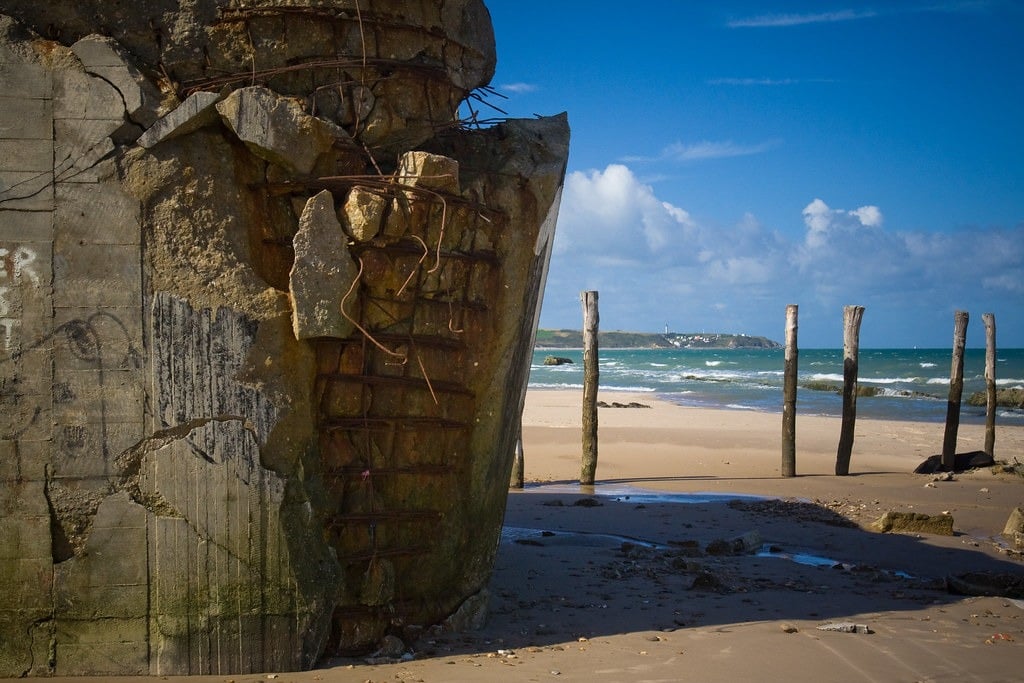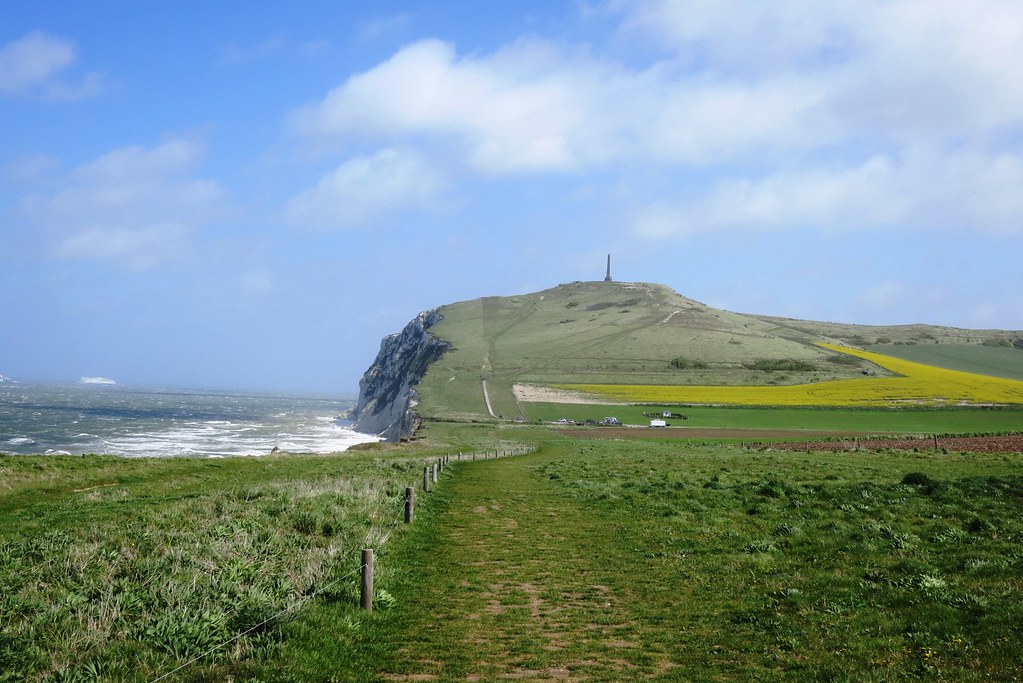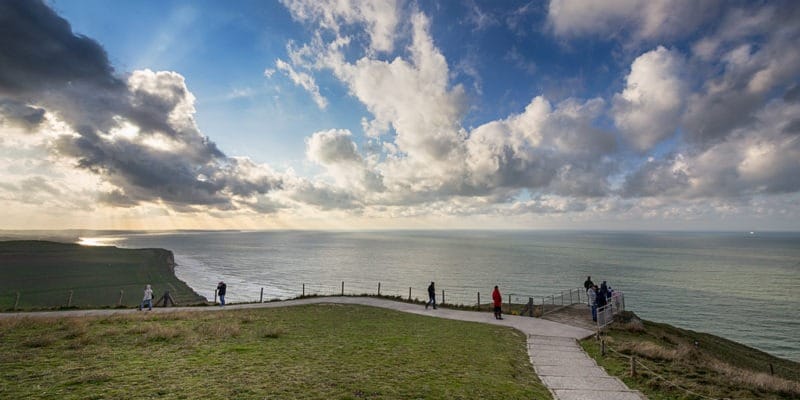France is famous for its picturesque and diverse landscapes, but one of the most impressive and often underestimated is the Grand site des Deux Caps. Located along the Côte d’Opale in the Hauts-de-France region, the Site des Deux Caps offers an unforgettable experience for nature lovers. This article guides you through the history, geography and activities of this magical place.
History and Geography of the Site des Deux Caps
The Site des Deux Caps, formed by Cap Gris-Nez and Cap Blanc-Nez, is a remarkable natural site on the Côte d’Opale. This area of undeniable natural beauty is characterized by spectacular coastal landscapes and remarkable biodiversity.
Geological formation
Although the two capes are geographically close, there are significant geological differences. Cap Gris-Nez, the more northerly of the two, is composed mainly of sandstone, clay and flint. This particular geological structure gives it a grayish color, hence the name “Gris-Nez”. This cape is the closest point to England on the European continent, with only 34 km separating it from the white cliffs of Dover. Around 10 km to the south, you’ll find Cap Blanc-Nez. As its name suggests, this cape is famous for its imposing white chalk cliffs, rising to 134 meters above sea level. These cliffs offer breathtaking views of the English Channel, and on a clear day, it’s even possible to see the English coastline.
History of the Deux Caps
Historically, the Site des Deux Caps has always been of major strategic importance. Because of their proximity to England, these capes have served as essential landmarks for navigators since ancient times. During the Second World War, their position took on even greater importance. The area became a strategic location for the German army, which installed numerous bunkers and artillery batteries as part of the Atlantic Wall, in the hope of repelling a possible Allied invasion. Today, many of these structures remain visible and have become places of remembrance and learning for visitors. The history of this region, however, is not limited to war. Over the centuries, the Site des Deux Caps has also been an important fishing and trading center. Today, it continues to play a vital role in local life, with many fishermen and sailors using it as a landmark as they navigate the often unpredictable waters of the English Channel.

The remains of a German bunker from the Second World War
Cape Blanc-Nez in detail
Cap Blanc-Nez stands proudly as one of the most emblematic and unmissable sites in this magnificent region. It’s famous for its picturesque coastline, with strikingly beautiful cliffs, extensive sandy beaches and breathtaking natural landscapes that look straight out of a postcard. Nestled near the picturesque commune of Sangatte, in the Pas-de-Calais département of the Hauts-de-France region, Cap Blanc-Nez offers a remarkable natural spectacle. The site’s imposing cliffs rise to an impressive height of around 134 meters, or 440 feet, above sea level. This prodigious height allows visitors to enjoy spectacular panoramic views across the English Channel, offering at times, when the weather is clear, a panorama of the English coastline.
Geographical location :
Cape Gris-Nez and its location
Cap Gris-Nez, located at Audinghen in the Pas-de-Calais department, is a geographical and historical marvel of the French coastline. Some 15 km north of Boulogne-sur-Mer and 25 km south-west of Calais, this cape offers a striking proximity to England, being one of the closest points to the neighboring country, just 30.3 km away. Cap Gris-Nez is distinguished by its 45-metre-high cliffs, offering breathtaking views of the English Channel and coastline.
These sandstone-clay cliffs are the closest point on the French coast to England. Together with Cape Dungeness on the English side, they form a strategic bottleneck for shipping. In terms of geology, the cape lies in an area of rocky cliffs in the Boulonnais region, between the sandy Picardy coast to the south and the Flemish coast to the east. These cliffs, formed of clay, sandstone and sand layers from the Upper Jurassic, are recognized for their importance in regional stratigraphy and tectonics. Cap Gris-Nez is also a strategic point for observing migratory birds, due to its position on the Strait, a crucial passageway for many species. The cape also played an important historical role, notably during the Franco-English wars, when it was a strategic point of defense and surveillance. The Cap Gris-Nez lighthouse, commissioned in 1957, is an emblematic feature of the site. With a beam reaching 45 km, it marks the narrowest point of the Pas de Calais, crucial for international shipping. The area is one of the busiest in the world for shipping, with over 500 ship movements a day and some 200,000 vessels a year. At the foot of the lighthouse is the Centre régional opérationnel de surveillance et de sauvetage (CROSS), which plays an essential role in monitoring the intense and often perilous shipping traffic in the Strait. The site is also famous for its Channel swim, a major physical and mental challenge for swimmers the world over.
Here’s how to find it:
Things to do at Site des Deux Caps
The Site des Deux Caps is much more than an impressive visual spectacle, it’s a playground for a multitude of exciting activities. Whatever your interests, you’ll find a suitable activity to enrich your visit.
Hiking and Nordic Walking
If you’re a keen hiker, you’ll be delighted by the possibilities offered by the Site des Deux Caps. The hilly landscapes and panoramic views make this site a true hiker’s paradise. The GR120, also known as the Sentier du Littoral, is a popular long-distance hiking trail. The trail passes through a variety of landscapes, from sandy beaches to high cliffs and country lanes. You’ll enjoy breathtaking views of the English Channel and, on a clear day, the coast of England. For those wishing to discover the region in a more dynamic way, Nordic walking is an excellent option. Several local associations offer outings supervised by certified instructors.
Birdwatching and Local Fauna
The Site des Deux Caps is an area of international importance for migratory birds, making it a favorite spot for amateur and professional ornithologists alike. You can observe a multitude of species, including guillemots, black-legged kittiwakes and herring gulls. Don’t forget your binoculars ! In addition to the birds, you may be lucky enough to catch a glimpse of grey seals or sea calves, which regularly frequent the site’s beaches.
Historical and Cultural Tours
If you’re a history buff, the Site des Deux Caps offers a fascinating glimpse into the past. You can explore several World War II bunkers and fortifications, poignant reminders of that tumultuous era.
Guided tours are often available, offering historical details and interesting anecdotes. The site is also home to several memorials and museums dedicated to the region’s maritime and military history. The Atlantic Wall Museum in Audinghen, for example, offers a detailed insight into the construction and use of these fortifications during the war.
Gastronomic discovery
Finally, your visit wouldn’t be complete without a taste of the local flavours. The region is renowned for its fresh seafood, particularly Bouchot mussels and oysters. Numerous restaurants along the coast offer breathtaking sea views as you savor these local delicacies.

The coastal path, GR120
R.A.
